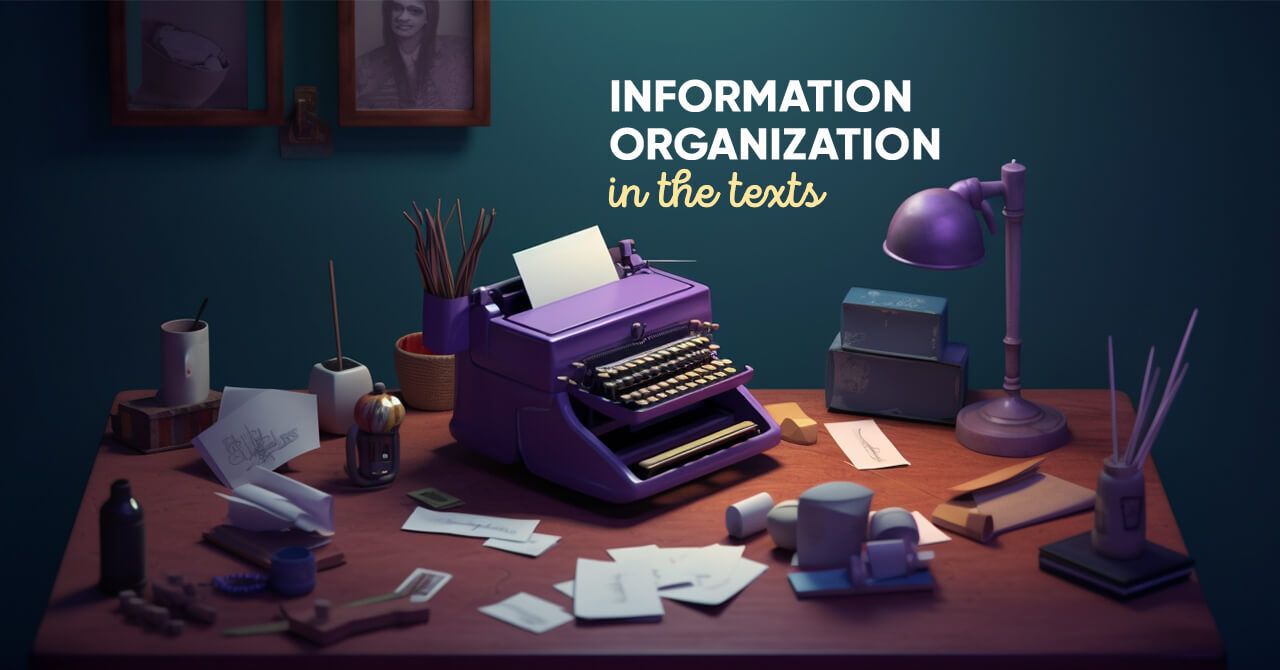
Information in Texts: Patterns of Organization
Recognizing the patterns of organization can make it easier to comprehend the main point and supporting details, follow the flow of ideas, and remember the information.
Identifying patterns of organization in paragraphs is important when reading because it helps the reader understand how the information is structured and the relationships between the ideas presented. Recognizing the patterns of organization can make it easier to comprehend the main point and supporting details, follow the flow of ideas, and remember the information. It can also help readers become more effective writers by providing them with models of how to organize their own writing.
Patterns of Organization
The different patterns of organization of a paragraph include:
1. Chronological order
The information is presented in the order in which it happened or should be done. For example, a paragraph about the steps to bake a cake could be organized chronologically, with each step listed in the order it should be completed.
Example:
To make a chocolate cake, start by preheating the oven. Next, mix together the dry ingredients in a bowl. Then, add the wet ingredients and mix until the batter is smooth. Pour the batter into a greased baking pan and bake for 30-35 minutes. Finally, let the cake cool before frosting it.
2. Spatial order
The information is presented in a specific spatial arrangement. For example, a paragraph about a city could be organized spatially, with different neighborhoods or landmarks discussed in the order they are located.
Example:
The city of Paris is divided into 20 arrondissements, each with its own unique character. The first arrondissement is in the center of the city and includes landmarks such as the Louvre Museum and Tuileries Garden. The 7th arrondissement is home to the Eiffel Tower and Champ de Mars park. The 18th arrondissement is known for the bohemian neighborhood of Montmartre and the Sacré-Cœur Basilica.
3. Cause and effect
The information is presented in terms of cause-and-effect relationships. For example, a paragraph about the effects of smoking could be organized by discussing the causes of smoking-related illnesses and their effects on the body.
Example:
Smoking is a major cause of lung cancer, which can be fatal if left untreated. Smoking also increases the risk of other health problems, such as heart disease, stroke, and respiratory infections. In addition, smoking can damage the appearance of skin, teeth, and hair and can lead to bad breath and stained fingers.
4. Compare and contrast
The information is presented by discussing similarities and differences between two or more subjects. For example, a paragraph comparing two different types of cars could be organized by discussing their similarities and differences in terms of performance, features, and cost.
Example:
The Honda Civic and Toyota Corolla are both popular compact cars with good fuel efficiency and reliability. However, the Civic has more horsepower and a sportier driving experience, while the Corolla is known for its comfortable ride and spacious interior. The Civic also tends to be slightly more expensive than the Corolla, but it offers more advanced safety features and technology options.
5. Problem and solution
The information is presented by discussing a problem and proposing a solution to address it. For example, a paragraph about reducing plastic waste could be organized by discussing the problem of plastic pollution and proposing solutions such as recycling, reducing plastic use, and using alternative materials.
Example:
Plastic waste is a major environmental problem, with millions of tons of plastic ending up in landfills and oceans every year. To reduce plastic waste, individuals can recycle plastic items such as bottles, bags, and containers. They can also reduce their plastic use by choosing reusable alternatives such as cloth bags, metal water bottles, and glass containers. Businesses can also play a role by offering eco-friendly packaging options and reducing their overall plastic use.
I'm an English teacher with over 30 years of experience. I have been able to help a lot of my students succeed in language proficiency tests such as IELTS, TOEFL, ESOL, PTE, etc.

